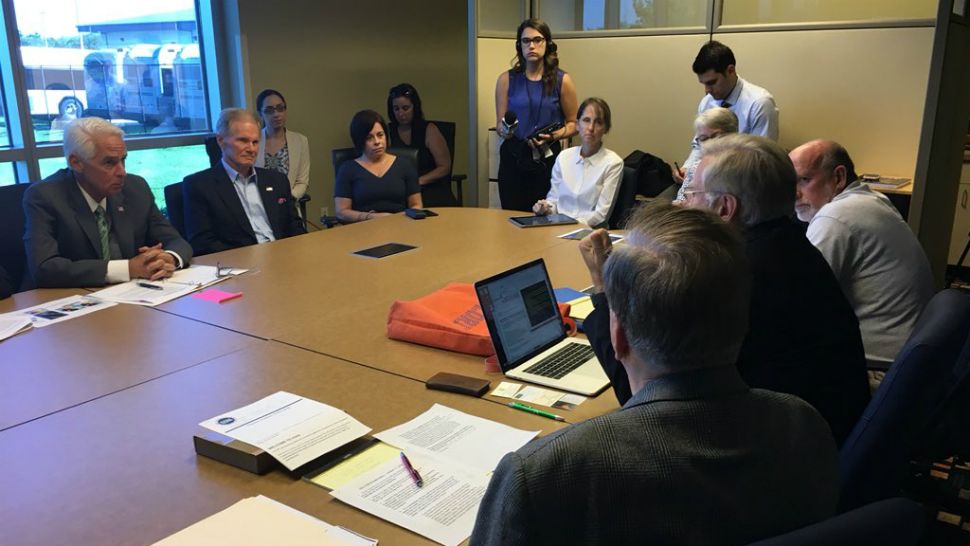PINELLAS COUNTY, Florida — Researchers and scientists told members of Florida's congressional delegation Wednesday that the recent red tide outbreak was one of the worst in recent memory.
- Nelson, Crist, Castor hear from scientists on red tide
- Outbreak attributed to warming seas, lack of wetlands, and pollution
- MORE: Red Tide section with previous stories, links, videos, maps
"The issues are very complex," said William Mitsch, Ph.D. and director of Everglade Wetland Research Park at Florida Gulf Coast University. "It's a mix of climate change, especially chemical-related but also rainfall related that makes it that much worse."
Mitsch was part of a group of scientists who met with Sen. Bill Nelson (D) and Reps. Charlie Crist (D, 13th District) and Kathy Castor (D, 14th District) to explain the impact of the toxic algae bloom along Florida's coastline.
In a matter of weeks, red dide spread to 14 Florida counties, sickening dozens of residents and causing the death of countless fish and marine life. The algae bloom has appeared in Florida as early as the 1840s.
Scientists attribute this year's outbreak to a combination of warming seas, lack of wetlands and pollution. Jacqueline Dixon, Ph.d, dean of marine science at University of South Florida is calling for stronger monitoring of the Gulf Coast and Red Tide.
"We can't stop the red tide," Dixon said. "But we can make predictions so that people at risk, people with asthma and coastal communities can make plans."



